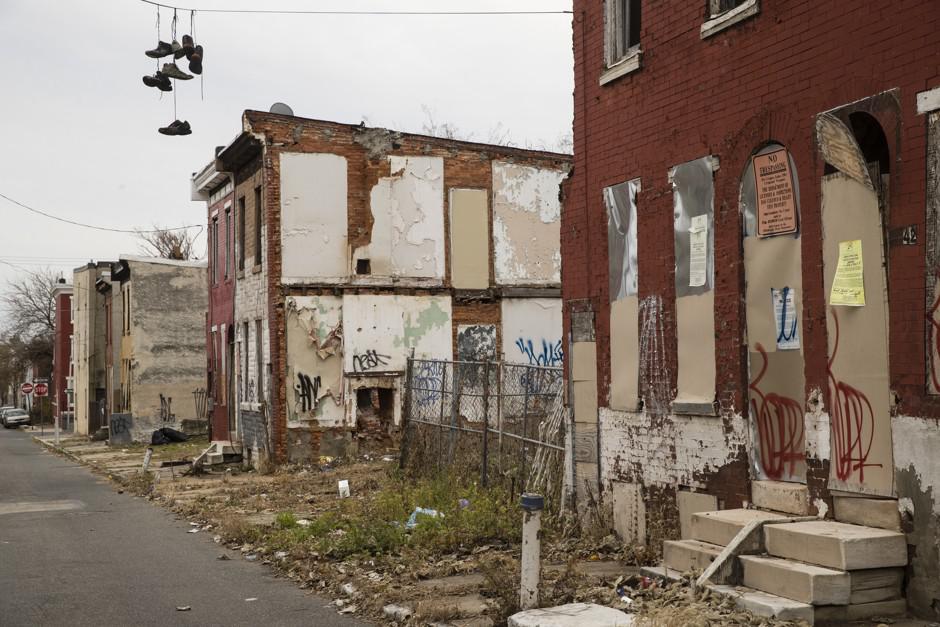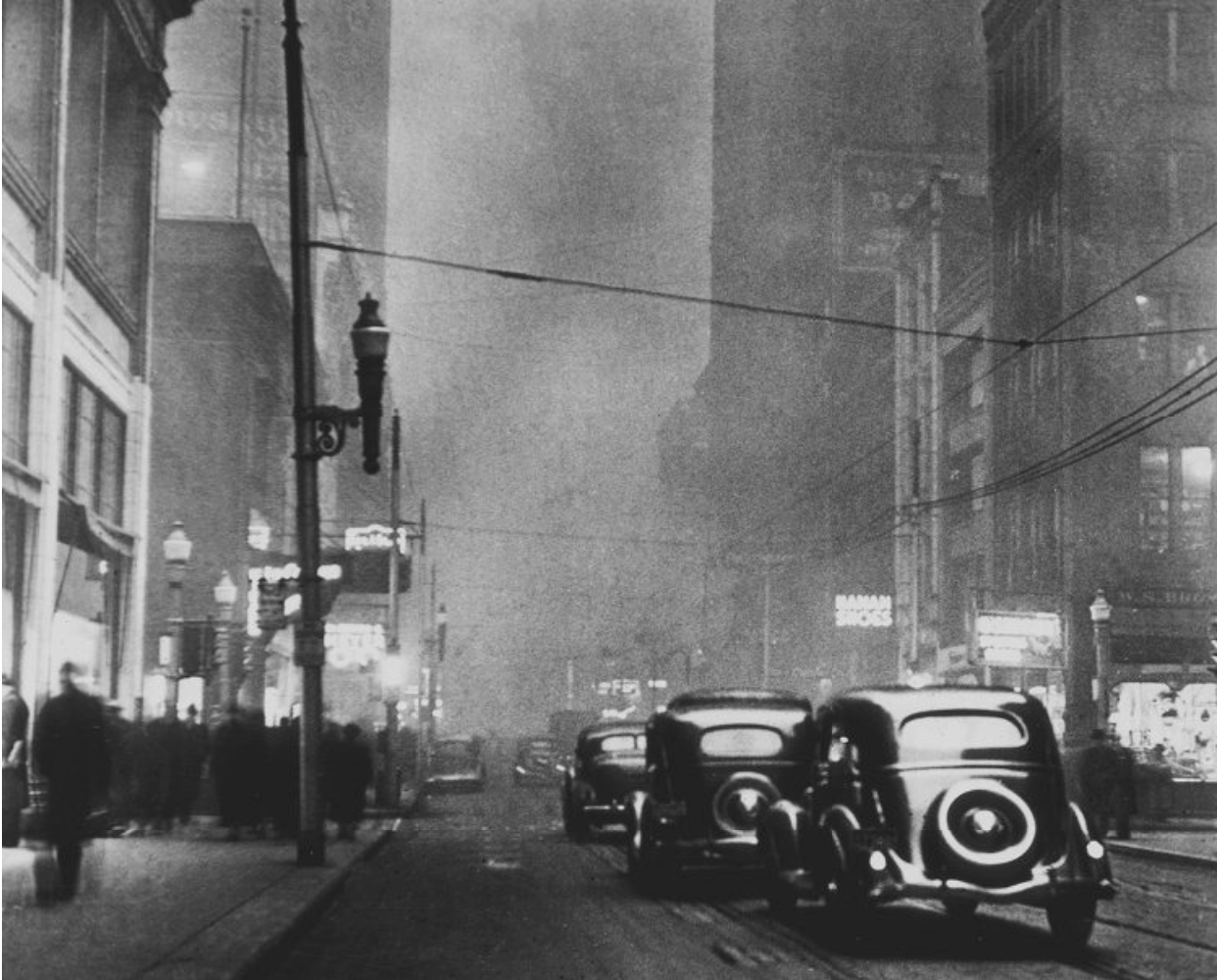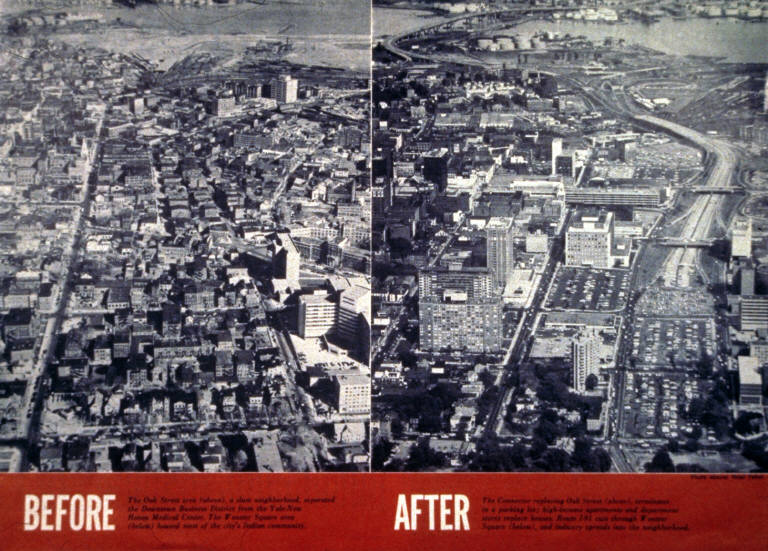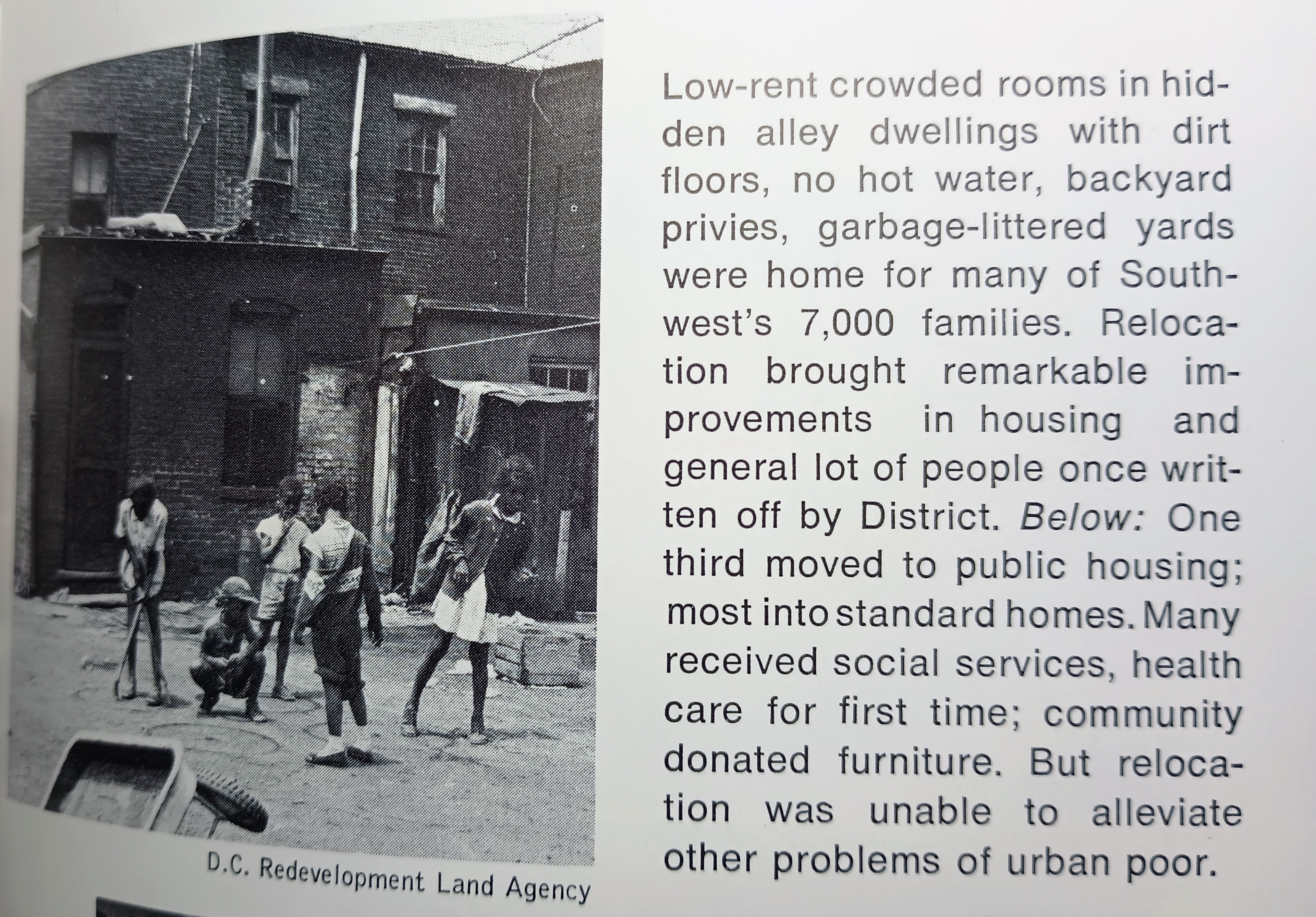Physical Address
304 North Cardinal St.
Dorchester Center, MA 02124
Physical Address
304 North Cardinal St.
Dorchester Center, MA 02124

Is it even possible today to write a vigorous argument in favor of the urban renewal policies of the 1950s? I doubt it. So I was glad to stumble upon a copy of Jeanne Lowe’s 1967 book, Cities in a Race with Time. Lowe is a sympathetic – but not sycophantic – observer of the urban renewal era, writing just before inner cities curdled into the full-blown “urban crisis” of the 1970s and 80s.

For 21st century urbanists, the hardest thing to remember about cities in 1950 is how bad the housing stock was. Lowe hardly mentions it because it’s the one thing every reader knew: old housing was awful. One New Haven resident complains about rehabilitation because his cold-water flat costs only $50 a month (equivalent to about $500 in 2024). To find conditions remarkable, she has to go to the worst streets of a Black ghetto:
Mary White, her husband and seven children were shoe-horned into a two-bedroom alley house that had no heat, electricity or hot water. They shared a backyard privy and faucet with neighbors
p. 215 (third printing, a Feb. 1968 hardcover)
Or to Pittsburgh:
Street and office lights used to burn all day when rivers vapors rose and held the region’s soft coal smoke in suspension over the city, casting a midnight gloom of smog throughout the day. Smog would turn office workers’ collars gray by noon; coughing and colds were an unhealthy commonplace in Pittsburgh. Even in the suburbs, housewives had to wash curtains weekly to cleanse them of soot. Airline pilots had a particular dread of landing at the Pittsburgh field with its “ceiling of black ink.”
p. 112
To me, and other 21st century skeptics, she would surely say what she says of Pittsburgh: “One needed to know the city as it had been to fully appreciate the extent of the change.” The steelman (or better, steelcity) case for urban renewal might be that it only looks like the worst villain around because it obliterated greater monsters.

This was urban renewal. The enactment of urban renewal [in 1954] as an expansion of Title I, coming so hard on the heels of the scarcely tried redevelopment program, caused even greater public confusion. Most people used the terms interchangeably, an error…
p. 34
What is urban renewal? It is a bundle of powers and funds that afford cities a uniquely versatile tool for bringing about many different kinds of planned changes and improvements in their blighted areas and for carrying out comprehensive development goals. While it is difficult enough to bring about these changes with renewal, such improvements would generally be impossible without it.
p. 560
Lowe opens her book with a narrow, technical understanding of the phrase “urban renewal”, and closes it with a capacious one. But the several case studies that compose most of the book’s considerable girth focus principally on the replacement of slum housing and the rebuilding of downtowns on modernist lines. Her final case, New Haven, is a single 150-page chapter that communicates the impossible weight of the task. Heroic mayor Richard C. Lee and his lieutenant Ed Logue threw everything at his city’s problems – a downtown highway, code enforcement, extensive residential rehabilitation, school investments, community programming. In Lowe’s judgment, New Haven is the true standout of the era. But she still worries that it’s unsustainable:
Will someone keep New Haven moving when Lee is no longer Mayor? Or will the city ride along on recent improvements until it sinks once more into decay…?
p. 546
Half a century on, Wikipedia has a short article about Mayor Lee. The pitiful section on his legacy notes that the downtown highway he built – the Oak Street Connector – is now named the Richard C. Lee Highway. But highways are a sidenote in Lowe’s narrative – there’s much more about the various approaches to replacing slum housing.

With the newly liberal Congress that was elected in 1936 and the Supreme Court’s broadened definition, in 1937, of the federal responsibility for the public welfare, the way appeared clear and the purpose justified for using federally collected income taxes to help financially disabled cities to eliminate this omnipresent evil.
p. 26
The new Congress responded to the consensus that cities needed “positive powers – especially eminent domain and public funds – to acquire and demolish slum buildings, as was being done in some European countries.” It passed the Housing Act of 1937, which established power and purse for demolishing slums and building public housing.
But this approach was too expensive. So Alvin Hansen and Guy Greer filled in the gap with the idea of “write-down” financing:
The willful disregard of economic information inherent in this formula is stunning. Not only were the new buildings economically inferior to the old; they were economically inferior to vacant land at market rates. The urban economy was screaming its need for density, but planners infected with the Howard–Corbusier mindset wear deaf to its calls.

Hansen and Greer’s write-down became Title I of the Housing Act of 1949, although urban renewal work did not start in most cities until the Housing Act of 1954 made more funding available. One city – nay, one man – dominates the history of Title I.
[Robert] Moses created in New York the biggest Title I program in the country – one with more results by 1960 than all other cities combined.
p. 48
Moses already had experience with redevelopment; his 1949 Stuyvesant Town was a popular success (although “planners and architectural critics” condemned its high density) on a similar model.
But the greater reason New York got so much done so fast is that Moses rewrote the Hansen-Greer formula, daring Washington to withhold funding. The New York method was more efficient:
In 1957, federal administrator Albert Cole threatened publicly “to cut New York off from all federal housing funds”; Moses called his bluff in days. (p 91).
Lowe’s 50-page chapter on Moses is of unique interest because it predates Robert Caro’s The Power Broker by six years. But her biography and evaluation of the man are largely the same. In light of 2024’s re-appreciation of Moses and present-day concerns with finding people who can Get Things Done, her chapter’s conclusion (headed Men to Run Programs) is prescient:
Can a city today attract the talent needed to meet the demands of the new programs? Mediocrity at the technical-managerial level and lack of effective leadership at the top are major urban problems of today.
p. 109

What New Haven intended to do with federal aid under the Housing Act was to virtually gut the heart of its downtown – removing the crazy quilt of “taxpayers,” cobblers’ shops, gin mills and hundred-year-old half-empty lofts and unattractive buildings.
p. 432
Along with Philadelphia and Pittsburgh, Lowe praises New Haven for having the boldness to reimagine its central business district (“A DARING CONCEPT”). But the thirty-page tale is one of debilitatingly slow fits and starts: finances are promised and lost, offers are made and retracted. In the end, even upgrading a slummy center into high-end office and hotel space cannot pencil out:
That New Haven’s downtown redevelopment actually went through seems to be a commentary on Roger Stevens’ unusual character… [If] Stevens had been a conventional developer or an ordinary man, he would surely have walked away from the project long ago (as his close advisors had counseled). Even with redevelopment aid, the project was not a market place transaction and could not be done through conventional financing mechanisms…
Where special financial reserves or guarantees were available, things got built.
p. 463
Among the many virtues of extemporaneous reading is the chance to view the past as future. Lowe could hardly have picked a worse time to offer predictions about the future of cities. Just two months after my volume was printed, Martin Luther King, Jr.’s assassination lit the powder keg that 1960s urbanists had only half-acknowledged.
But for our purposes, her timing is ideal. She tries to see a hopeful future, with urban renewal dogging the heels of the spreading slums and abating their evils with clean, public or affordable housing. But even in 1967, doubts have crept in. She worried about the lack of talent and commitment among mayors and staff. “Urban renewal”, tightly defined in the 1950s, has opened out to encompass almost any urban policy.
There are only inklings, glimmers of the post-1970 urban crisis. She writes about “juvenile delinquency”, not “crime.” Drugs barely appear; firearms not at all. She has no idea that landlords will soon set the match to their own buildings. In the strangest passage of the book, she sees the colors of the new and terrible dawn and praises it as hope:
Many landlords found it cheaper to vacate a building than to continue operating a slum… The boarded-up houses, and the growing vacancy rate in these neighborhoods (almost double [Philadelphia’s] average of 6 per cent for rental housing) were among the more hopeful signs in the blighted inner city. The impressive improvement in housing revealed by the 1960 census could be attributed in part to this “slum cleansing operation.” When the gray areas are cleared, as called for by the comprehensive plan, it is hoped that the costs, both in human and site acquisition terms, would be greatly reduced.
p. 360
